Topic Question Set
Q 1
:
A wire of resistance R and length L is cut into 5 equal parts. If these parts are joined parallely, then resultant resistance will be [2024]
1/25 R
1/5 R
25 R
5 R
(1)
Resistance of each part =
Total resistance =
Q 2
:
In the given figure and Battery is ideal with emf 12 V. Equivalent resistance of the circuit and current supplied by battery are respectively [2024]
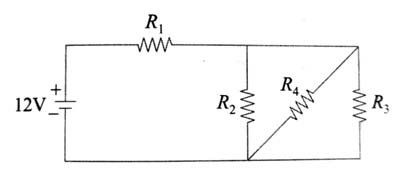

(2)
Here are in parallel,
is in series with , so
Equivalent resistant,
The current supplied by the battery,
Q 3
:
The equivalent resistance between A and B is: [2024]


(4)

Q 4
:
The effective resistance between A and B, if resistance of each resistor is R, will be [2024]
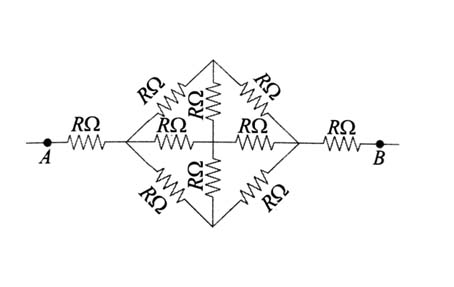

(2)
From symmetry we can remove two middle resistances. New circuit is
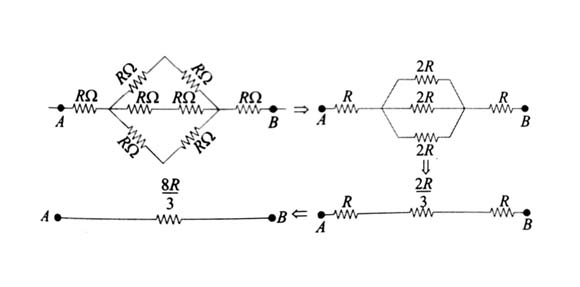
Q 5
:
Twelve wires each having resistance are joined to form a cube. A battery of emf is joined across points and . The voltage difference between and is ____ . [2024]
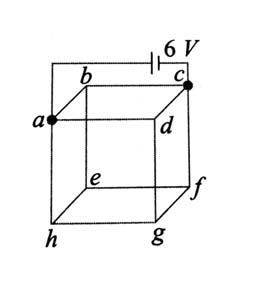

(1)
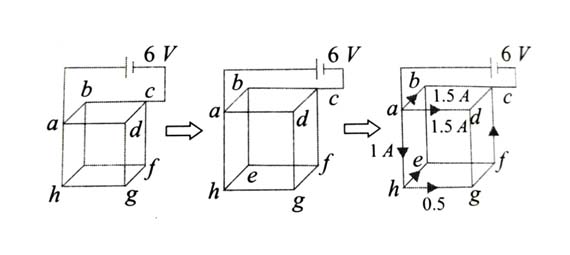
Current through battery
The current through
across
Q 6
:
A wire of resistance 20 is divided into 10 equal parts, resulting pairs. A combination of two parts are connected in parallel and so on. Now resulting pairs of parallel combination are connected in series. The equivalent resistance of final combination is ____ . [2024]
(5)

Resistance of each part
2 parts are connected in parallel
Now, there will be 5 parts, each of resistance , they are connected in series.
Q 7
:
Equivalent resistance of the following network is _______ . [2024]
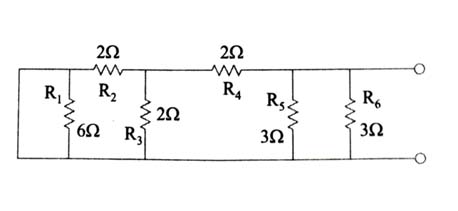

(1)
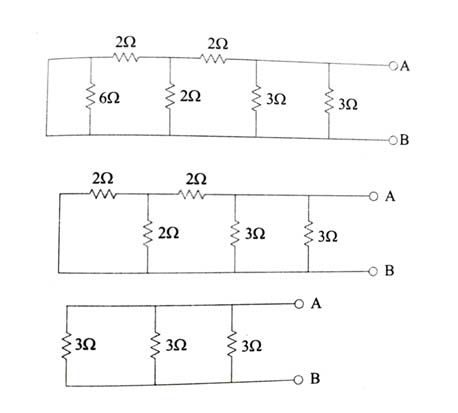
Q 8
:
Find the equivalent resistance between two ends of the following circuit. [2025]
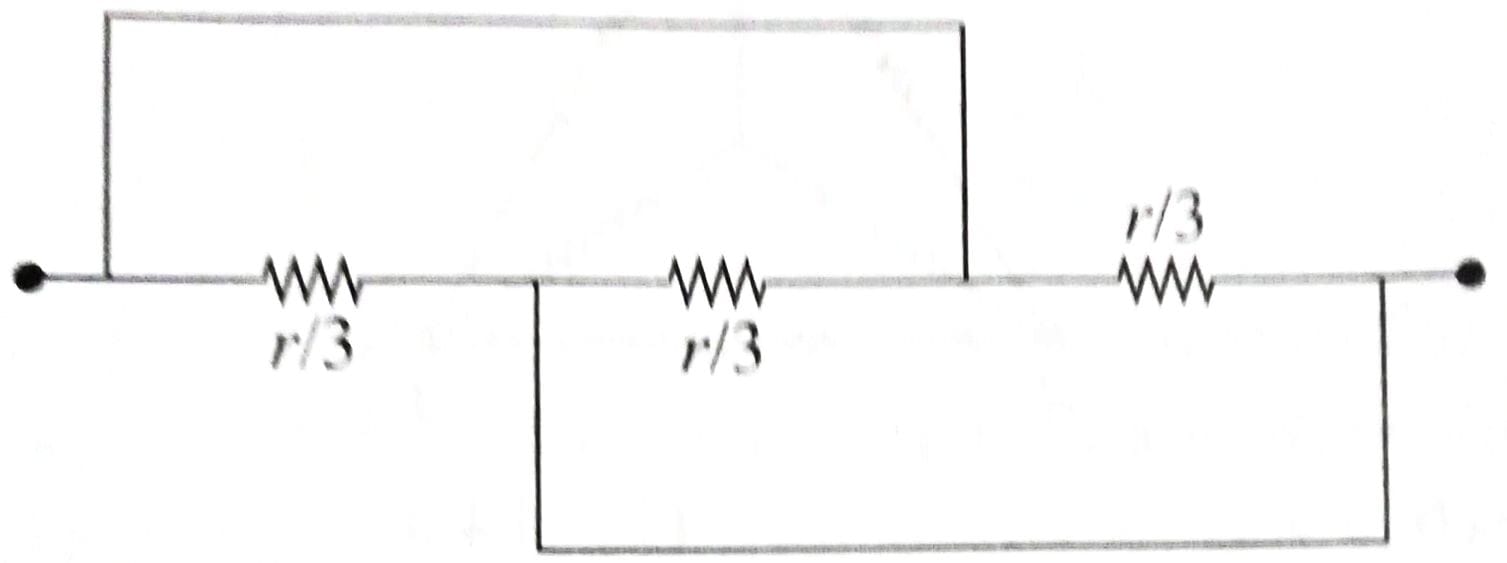

r
-
-
-
(3)
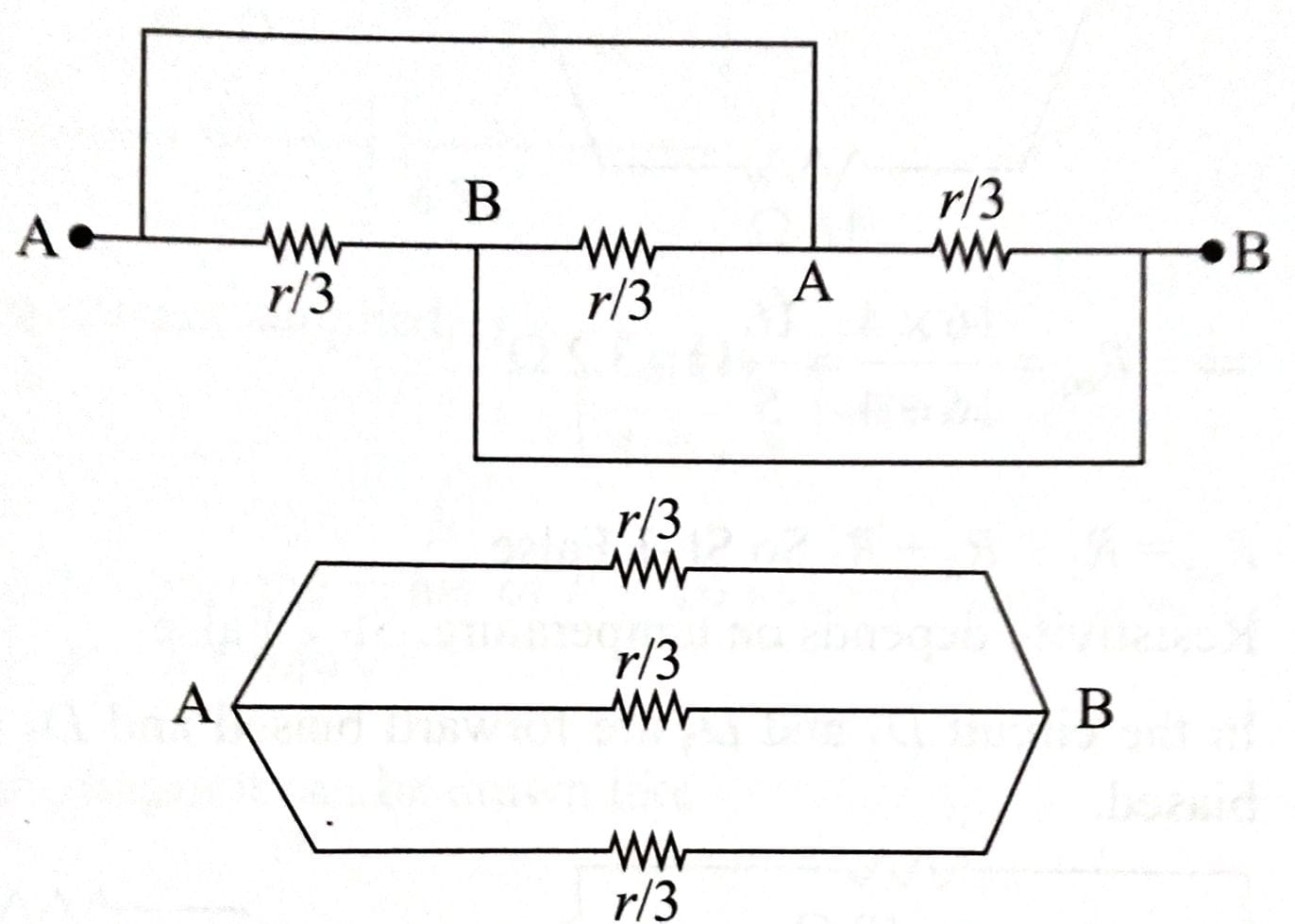
Or
Q 9
:
A wire of resistance R is bent into an equilateral triangle and an identical wire is bent into a square. The ratio of resistance between the two end points of an edge of the triangle to that of the square is [2025]
9/8
8/9
27/32
32/27
(4)
For the wire bent into an equilateral triangle, each side has a resistance

(lets say)
.For the wire bent into a square, each side has a resistance
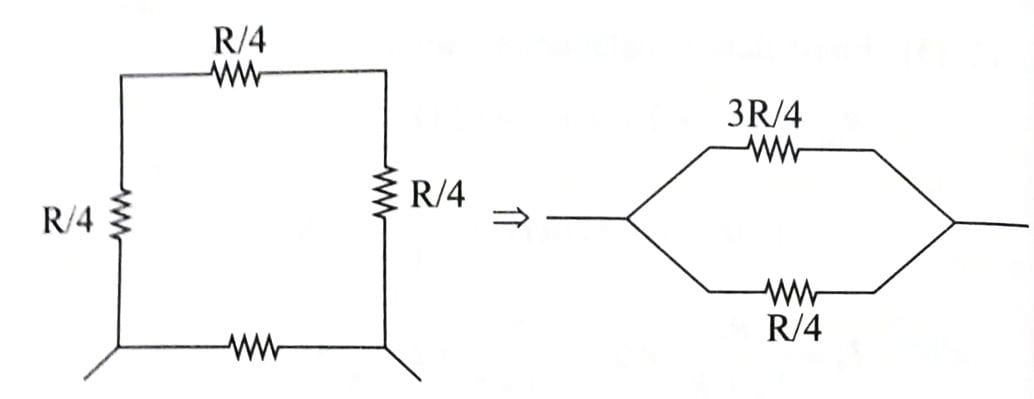
. (lets say)
Q 10
:
A wire of length 25 m and cross-sectional area 5 having resistivity of is bent into a complete circle. The resistance between diametrically opposite points will be [2025]
12.5
50
100
25
(none)
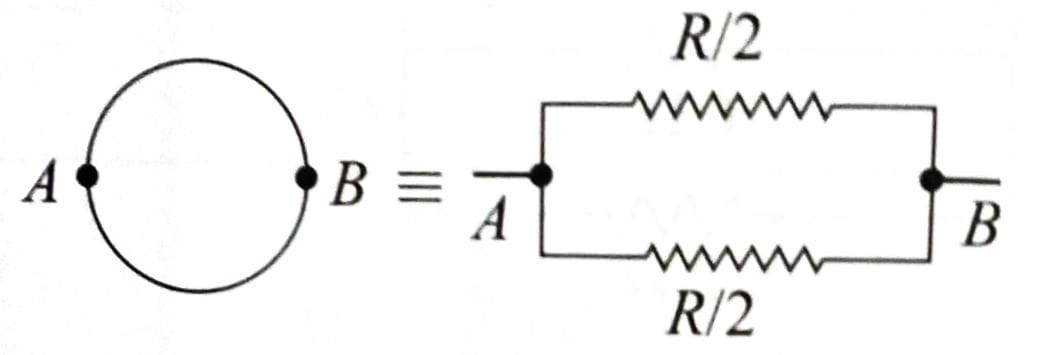
Let R be total resistance across ends of wire, then

